Motivation and objectives
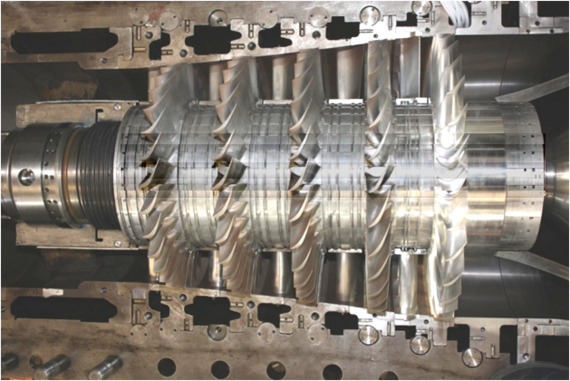
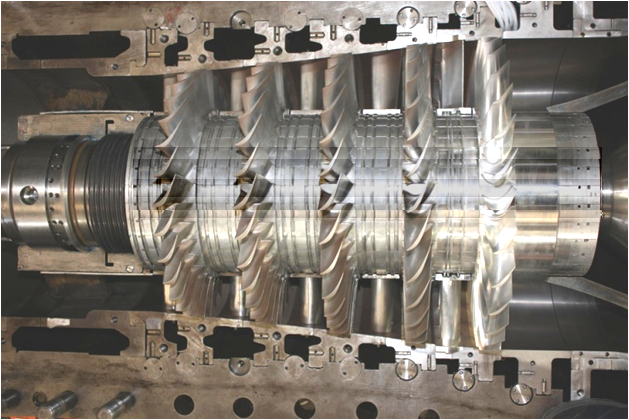

The blade geometry of aircraft engines deviates from the original geometry because of wear and the maintenance process. Variations are for example the thickness distribution, blade length and stagger angle. These geometry parameters can have an influence on the vibration excitation of downstream rotor cascades and have been investigated individually so far. Such deviations occur in combination in reality. To reproduce this in a model, geometries are generated based on probabilistic calculations and aeroelastic simulations are carried out. The results then allow the derivation of blade tolerance bands. With the help of these, it can be ensured that the regeneration process causes no critical vibration states.
High-pressure turbine blades are exposed to enormous thermal loads due to the upstream combustion chamber. Therefore, the first turbine stages must be cooled. This is realized by means of air bleed from the compressor. The cooling air is directed to the blade surface via boreholes. The high thermal and aerodynamic loads cause heavy wear on film cooling holes, trailing edges and seals. Because of wear, cold streaks can propagate downstream through the turbine and cause rotor vibrations, which can shorten the lifetime of the blades. This type of excitation is investigated at the air turbine of the TFD by injecting cold streaks into the flow and measuring the resulting vibration amplitudes with a tip-timing system.
Results
Using aero engine turbine guide vanes, it could be shown that regeneration-related deviations from the original geometry have a significant influence on the aerodynamic vibration excitation of the downstream blade rows. A change in the stagger angle, for example, has a significant influence on the vibration excitation of the downstream blades. The resulting oscillation amplitudes quadruple compared to the original cascade.
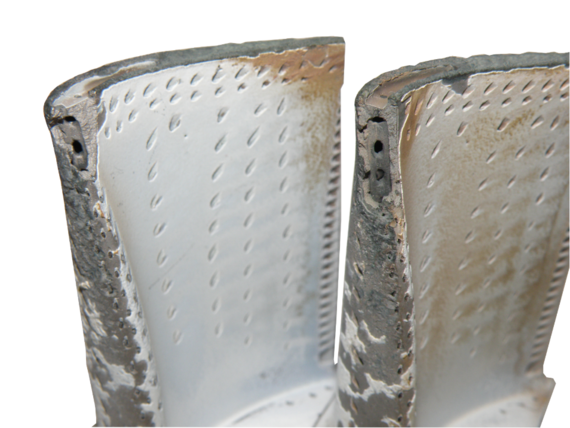
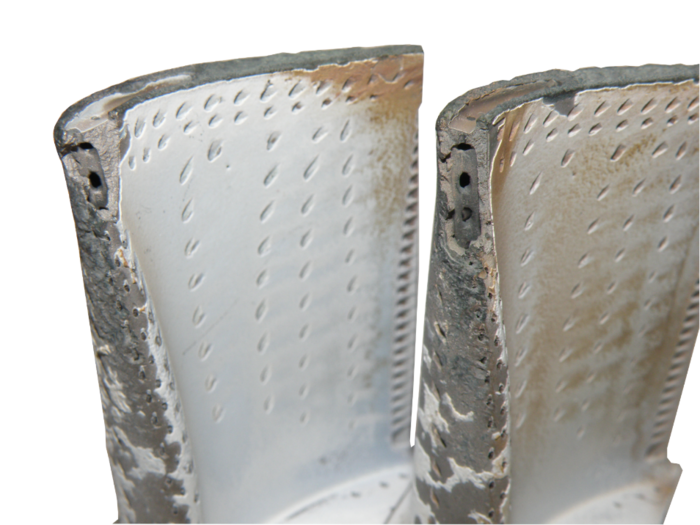
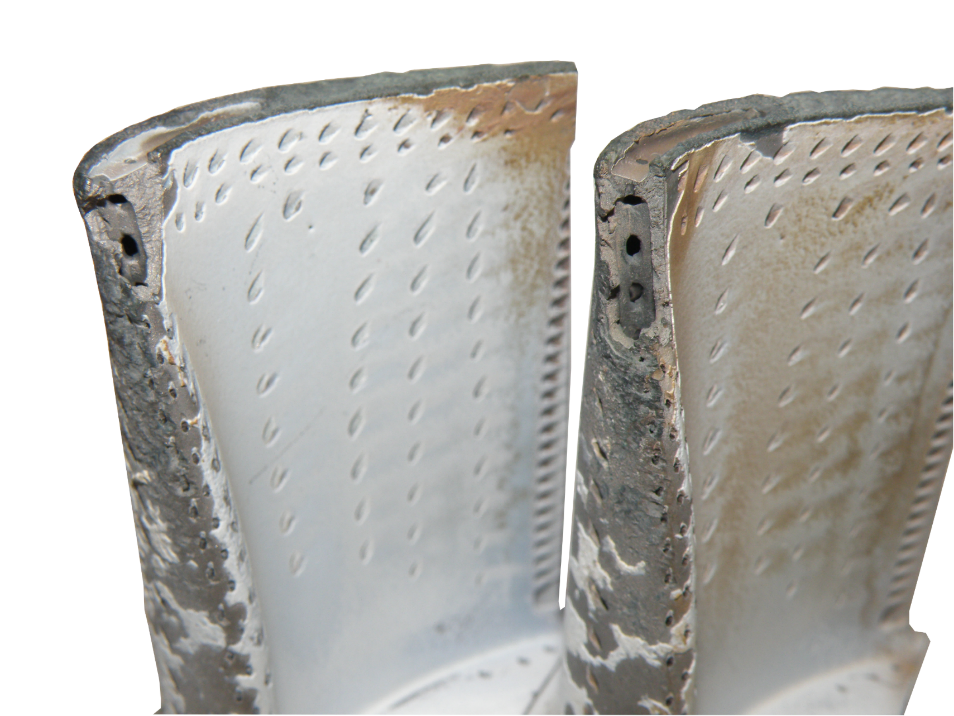
Current research and outlook
Currently, the calculated mixing behavior of cold streaks is analyzed and appropriate points of measurement are derived for later experiments. The numerical results are validated by means of the experiments. The subprojects A3 (Exhaust Gas Analysis) and A6 (Mixing and Burner Signature) are supplied with the information. In addition, a tool chain for the investigation of combined parameter variations will be set up. The results contribute to the selection of an appropriate regeneration path in the overall project.
Subproject leader
30823 Garbsen
30823 Garbsen
Staff
Publications
International Scientific Journal Paper, peer-reviewed
-
(2017): Forced Response Excitation due to Stagger Angle Variation in a Multi-Stage Axial Turbine, International Journal of Gas Turbine, Propulsion and Power Systems Volume 9 (Number 3), 1--11
-
(2015): Experimentally Verified Study of Regeneration-Induced Forced Response in Axial Turbines, Journal of Turbomachinery 137 (3), S. 1–10
DOI: 10.1115/1.4028350
International Conference Paper, peer-reviewed
-
(2018): Experimental Validation of Forced Response Methods in a Multi-Stage Axial Turbine, Proceedings of the ASME Turbo Expo 2018, 11-15 June 2018, Oslo, Norway, GT2018-75390
-
(2018): Blade Vibration Measurements in a Multi-Stage Axial Turbine with Geometric Variations, 2018 AIAA/ASCE/AHS/ASC Structures, Structural Dynamics, and Materials Conference, AIAA SciTech Forum, 8-12 January 2018, Kissimmee, Florida, USA, AIAA 2018-0952
DOI: 10.2514/6.2018-0952 -
(2016): Aerodynamic Excitation for Variable Tip Gap, In: Proceedings of ASME Turbo Expo 2016: Turbomachinery Technical Conference & Exposition
-
(2016): Aerodynamical and Strucutral Analysis of Operationally used Turbine Blades, In: 5th International Conference on Through-life Engineering Services, Cranfield, England
-
(2015): Influence of a Multi-Hole Pressure Probe on the Flow Field in Axial-Turbines, European Turbomachinery Conference ETC11. Madrid
-
(2015): Forced Response Excitation due to Variances in a Multi-Stage Axial Turbine, Proceedings of International Gas Turbine Congress 2015, Tokyo, Japan
-
(2014): Recent Progress in Turbine Blade and Compressor Blisk Regeneration, 3rd International Conference on Through-life Engineering Services; Session: Recent Progress in Jet-Engine Regeneration, Bd. 22. Cranfield, England, S. 256–262
DOI: 10.1016/j.procir.2014.07.016 -
(2014): Experimentally Verified Study of Regeneration-Induced Forced Response in Axial Turbines, Proceedings of the ASME Turbo Expo 2014, S. GT2014-25664
-
(2014): Dynamic Behavior of a Mistuned Air Turbine: Comparison Between Simulations and Measurements, Proceedings of ASME Turbo Expo 2014: Turbine Technical Conference and Exposition. Düsseldorf, Germany, S. V07BT33A015
DOI: 10.1115/GT2014-26025 -
(2013): Regeneration-Induced Forced Response in Axial Turbines, ASME Turbo Expo 2013Turbine Technical Conference and Exposition, June 3-7, 2013, San Antonio, Texas, USA. San Antonio, Texas, USA, S. V07BT33A010
DOI: 10.1115/GT2013-95431 -
(2013): Influence of Regeneration-Induced Variances of Stator Vanes on the Vibration Behavior of Rotor Blades in Axial Turbines, 10th European Conference on Turbomachinery. Lappeenranta, Finland, S. 235–247
International Conference Paper, not peer-reviewed
-
(2016): Probabilistic CFD-Analysis of Regeneration-Induced Geometry Variances in a Low-Pressure Turbine, In: 52nd AIAA/SAE/ASEE Joint Propulsion Conference, Propulsion and Energy Forum, Salt Lake City, Utah, USA, S. AIAA 2016--4555.
-
(2015): Influence of Combustion Chamber Defects on the Forced Response Behavior of Turbine Blades. , Proceedings of the 14th International Symposium on Unsteady Aerodynamics, Aeroacoustics & Aeroelasticity of Turbomachines, ISUAAAT14, 8-11 September 2015, Stockholm, Schweden, S. 9
National Scientific Journal Paper, not peer-reviewed
-
(2013): Einfluss betriebs- und regenerationsbedingter Varianzen von Turbinenschaufeln, International Journal for Electricity and Heat Generation VGB PowerTech 2013 (11), S. 51–58
National Conference Paper, not peer-reviewed
-
(2014): Regenerationsbedingte Nachlauferregung in Axialturbinen, Instationäre Aerodynamik und Aeroelastik in Turbomaschinen. Institut für Energietechnik, Ruhr-Universität Bochum. Bochum, 05.03.2014
-
(2011): Nachhaltige Regeneration von Flugzeugtriebwerken, DLRK 2011 in der Session Innovation aus Niedersachsen Leichtbau und Triebwerktechnik. German Society for Aeronautics and Astronautics. Bremen, 01.01.2011




